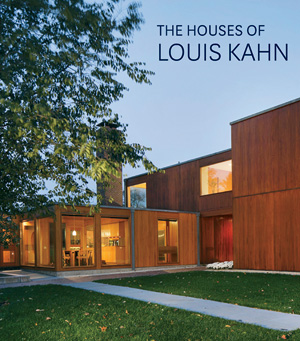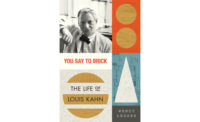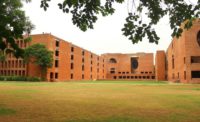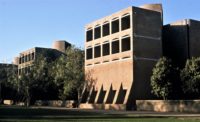A Prism for Viewing a Master
While reading this outstanding book, I kept remembering the Bill Clinton 1992 election campaign that was defined by the phrase “It's the economy, stupid.” I had to keep myself from shouting, “It's the houses, stupid!” Marcus and Whitaker have not only directed superb scholarship to the study of Kahn's houses—both built and unbuilt—but have shown that the houses can be a lens on a broader understanding of Kahn's philosophy, his interpretation of Modernism, and his appreciation of the vernacular. They show how Kahn evaluated clients and how he designed spaces that would allow each house to become a personalized ideal—a home.

The authors write in an engaging manner, skillfully weaving critical quotes—from Kahn, clients, and previously unpublished letters—into a masterful narrative. This is a heroic feat, given the exhaustive documentation from which they largely drew—the Kahn Collection housed at the Architectural Archives of the University of Pennsylvania. Whitaker, who is curator of that archive, and Marcus, who teaches the history of design at Penn, made wise and insightful choices of what to include. They have pulled forth many gems of information augmenting our view of how Kahn perceived contemporary architecture. They note periodicals that Kahn might have seen when he worked for Paul Cret in 1930 (such as the September L'Architecte and the October Architectural Record) and that he jumped at a last-minute chance to visit Le Corbusier's Ronchamp and La Tourette in 1959 after he spoke at CIAM. A fascinating chapter deals with Kahn's interiors. It is revelatory and gives us a glimpse of how the architect worked with commercial products and furniture of his own design to craft interiors.
The authors have sagely let their nine case histories for the built projects stand alone. These are short and to the point: how and why Kahn got each commission and how the design development progressed. They have chosen excellent photographs that mix archival pictures, many of them by John Ebstel, a favorite photographer of Kahn's, and recent images by Matt Wargo.
Studying Kahn can be a perplexing endeavor. Marcus and Whitaker have answered the question of where to begin with it. By integrating the historical and architectural context with Kahn's own history and his residential design, they have provided the perfect book for students who are just beginning to investigate Kahn and, for those who have studied him for years, an enlightened source.
Susan G. Solomon is the author of Louis I. Kahn's Jewish Architecture: Mikveh Israel and the Midcentury American Synagogue.






Post a comment to this article
Report Abusive Comment